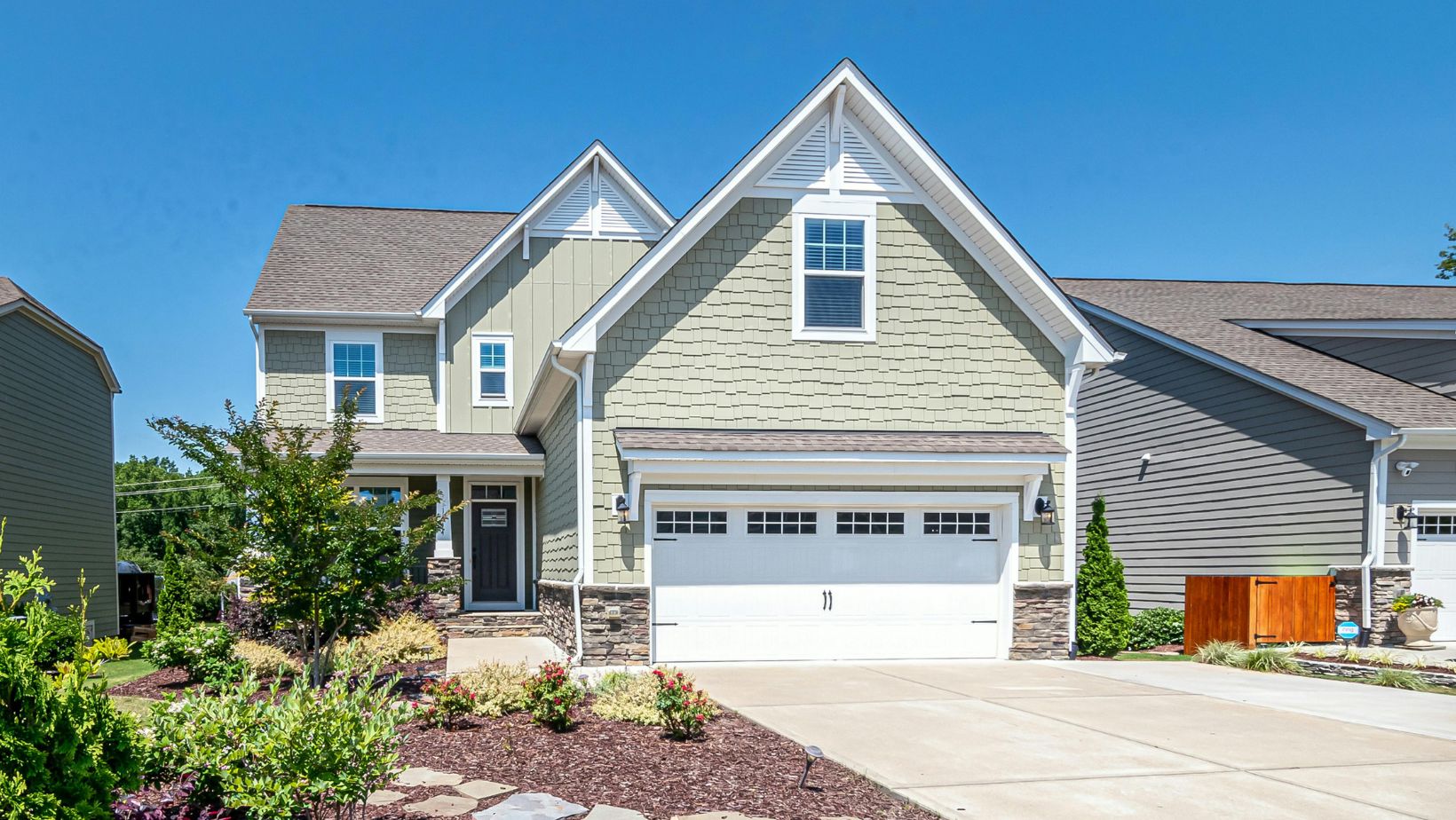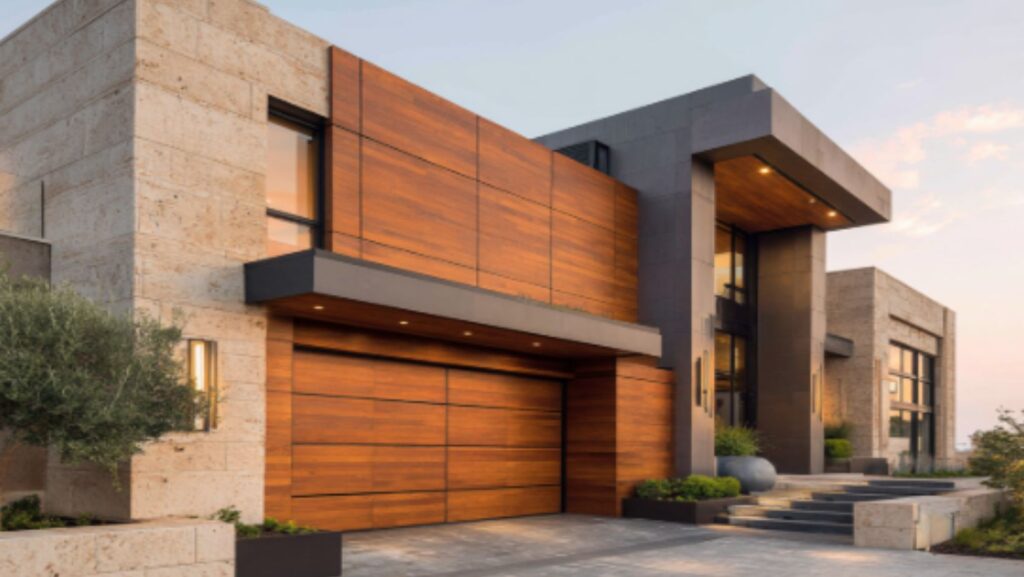Gone are the days when garage doors served merely as functional barriers, relegated to the architectural afterthought category alongside utility boxes and service meters. Today’s discerning homeowners and architects understand that garage door repair services and emergency garage door maintenance represent just one facet of a much larger design conversation, where residential garage door installation and commercial garage door solutions have evolved into sophisticated architectural statements that can make or break a home’s entire aesthetic composition. Like a well-tailored suit that transforms an ordinary person into someone extraordinary, the right garage door system can elevate a modest home into an architectural masterpiece that commands attention and respect from every passerby.
The transformation of garage doors from utilitarian necessities into design focal points reflects broader shifts in how architects and homeowners approach residential design. Innovative facade design approaches treat garage doors as adaptive architectural elements that respond dynamically to light, weather, and user needs throughout the day. This evolution parallels how garage door design ideas can dramatically enhance home exteriors, transforming these large-scale elements from visual obstacles into harmonious components that strengthen rather than compete with overall architectural vision.
The Scale and Impact Reality Check
Picture this: you’ve spent months perfecting your home’s landscaping, selecting the ideal exterior lighting, and coordinating every architectural detail to create the perfect curb appeal. Then you realize that your garage door occupies roughly 30 to 40 percent of your home’s front facade. That’s like carefully composing a symphony only to discover the timpani section is playing a completely different piece. The sheer scale of garage doors in residential architecture means they cannot be ignored or treated as secondary elements without seriously compromising the overall design integrity.
This mathematical reality has forced architects to reconsider garage doors not as necessary evils but as significant design opportunities. When you have that much real estate on your home’s most visible facade, every design decision becomes magnified. The material choice, color selection, panel configuration, and hardware details all contribute to either supporting or undermining your home’s architectural narrative.
Smart designers now approach garage door selection with the same attention they’d give to selecting front doors, windows, or roofing materials. They understand that a well-chosen garage door can actually enhance property values, while a poorly integrated one can make even the most expensive home look unfinished or confused about its architectural identity.
Material Innovation and Architectural Integration
The materials revolution in garage door manufacturing has opened design possibilities that would have seemed impossible just a decade ago. Modern garage doors incorporate everything from reclaimed wood and weathering steel to high-tech composites and smart glass that can transition from transparent to opaque at the touch of a button. These material innovations allow garage doors to actively participate in a home’s architectural conversation rather than simply occupying space.
Consider how contemporary architects are using garage doors as opportunities to introduce textural contrast into residential designs. A smooth stucco home might feature a garage door with deeply grooved wood panels that add visual interest and tactile appeal. Conversely, a rustic stone cottage might showcase a sleek metal garage door that provides contemporary counterpoint to traditional materials, creating dynamic tension that keeps the design from becoming predictable.

The integration possibilities extend beyond simple material matching. Sophisticated garage door designs now incorporate lighting elements, integrated planters, and even architectural details like corbels or pediments that echo design themes found elsewhere on the home’s exterior. This holistic approach treats garage doors as integral architectural components rather than aftermarket additions.
Smart Technology Meets Timeless Design
The intersection of smart home technology with garage door design has created opportunities for architectural elements that adapt and respond to changing conditions throughout the day. Garage doors equipped with sensors can automatically adjust their transparency based on available natural light, privacy needs, or security requirements. Like chameleons that change color to match their surroundings, these intelligent systems allow garage doors to transform their appearance and function based on real-time conditions.
This technological integration doesn’t require sacrificing aesthetic appeal for functionality. The most sophisticated systems integrate their smart capabilities so seamlessly that the technology becomes invisible, leaving only the enhanced performance and convenience. Remote monitoring capabilities allow homeowners to verify their garage door status from anywhere in the world, while predictive maintenance algorithms can alert users to potential issues before they become costly problems.
The smart integration extends to coordination with other home systems. Garage doors can now communicate with security systems, climate control, and even landscape lighting to create coordinated responses to different scenarios. When you arrive home after dark, your garage door can trigger pathway lighting, adjust interior climate systems, and disarm security features in a seamless sequence that feels almost magical in its simplicity.
Regional Architecture and Cultural Expression
Different architectural traditions around the world have developed unique relationships with garage integration, offering inspiration for contemporary American residential design. Mediterranean villas often incorporate garage openings into arcade-style facades that make the garage feel like a natural extension of the living space rather than a utilitarian addition. Scandinavian designs frequently use garage doors as opportunities to showcase beautiful wood craftsmanship that celebrates natural materials and traditional building techniques.
Modern American architects are drawing from these global traditions while adapting them to local climate conditions and lifestyle needs. A home in the Pacific Northwest might feature garage doors that echo the region’s industrial heritage while incorporating weather-resistant materials suited to the local rainfall patterns. Southwest designs might use garage doors as opportunities to create cooling shade structures that provide relief from intense sun while maintaining architectural coherence.
This regional sensitivity extends to understanding how garage doors function within neighborhood contexts. A garage door that works perfectly for a contemporary home in an urban setting might look completely out of place in a rural farmhouse context. The most successful garage door designs demonstrate awareness of both their immediate architectural context and their broader cultural setting.
The Psychology of Arrival Sequences
Architects increasingly recognize that garage doors play crucial roles in creating positive arrival experiences for homeowners and visitors. The transition from public street to private property represents a significant psychological shift, and garage doors can either support or undermine this important threshold experience. A well-designed garage door contributes to feelings of security, pride, and homecoming that affect how people experience their living environment.
This psychological dimension extends to how garage doors affect neighborhood dynamics. Garage doors that enhance rather than detract from street-level aesthetics contribute to overall neighborhood appeal and property values. They become part of the visual fabric that makes neighborhoods feel cohesive and well-maintained rather than chaotic or neglected.
The most thoughtful garage door designs consider how they’ll be experienced from multiple perspectives: approaching from the street, walking past as a pedestrian, and viewing from neighboring properties. This comprehensive approach ensures that garage doors contribute positively to both private homeowner satisfaction and broader community aesthetics.
Maintenance as Design Consideration
The architectural sophistication of modern garage door systems extends to considering how maintenance requirements affect long-term design success. Beautiful garage doors that require constant upkeep to maintain their appearance can become expensive disappointments over time. The most successful designs balance aesthetic ambition with realistic maintenance expectations that suit homeowners’ lifestyles and budgets.
This maintenance consideration influences everything from material selection and finish choices to hardware specifications and operational mechanisms. A coastal home needs garage door materials that can withstand salt air exposure without constant refinishing, while a mountain retreat requires systems that function reliably in extreme temperature variations.
Advanced garage door designs now incorporate self-diagnostic capabilities that monitor system health and alert homeowners to maintenance needs before problems affect appearance or function. This predictive approach transforms maintenance from reactive crisis management to proactive care that preserves both aesthetic appeal and operational reliability.
The Future of Architectural Garage Door Integration
Looking ahead, garage door design continues evolving toward even greater architectural integration and technological sophistication. Emerging materials like programmable smart glass and shape-memory alloys promise garage doors that can literally transform their physical properties in response to changing conditions. Imagine garage doors that become more transparent during pleasant weather to connect interior and exterior spaces, then automatically adjust to provide privacy and security when needed.
The integration possibilities extend to renewable energy generation, with garage doors incorporating photovoltaic cells that contribute to household energy production while maintaining aesthetic appeal. Storm protection capabilities continue advancing, with garage doors that can automatically prepare for severe weather events while maintaining their architectural character during normal conditions.
These advancing capabilities promise garage doors that truly earn their prominent positions in residential facade compositions, contributing meaningfully to both aesthetic appeal and functional performance in ways that justify their significant visual presence.
The architectural revolution in garage door design represents broader trends toward thoughtful integration of functional and aesthetic considerations in residential design. As these systems continue evolving, they demonstrate how careful attention to often-overlooked building elements can dramatically enhance overall architectural success. The homes that embrace this evolution will enjoy the benefits of truly integrated design where every element contributes to a cohesive and compelling architectural vision.


More Stories
Affordable Housing Meets Modern Architecture
Richmond Home And Garden Show: A Must-Visit for Every Green Thumb
Lehigh Valley Home And Garden: A Comprehensive Guide